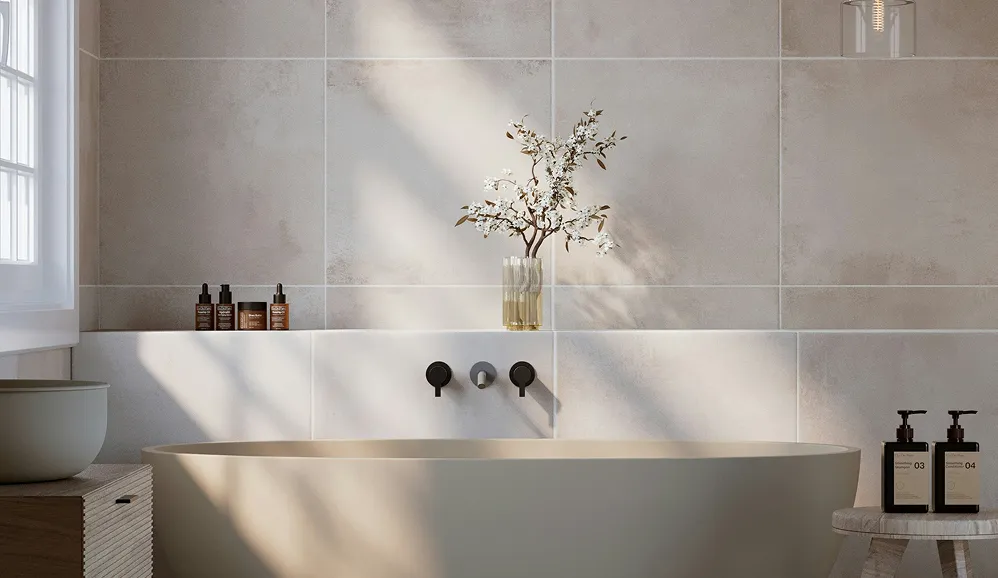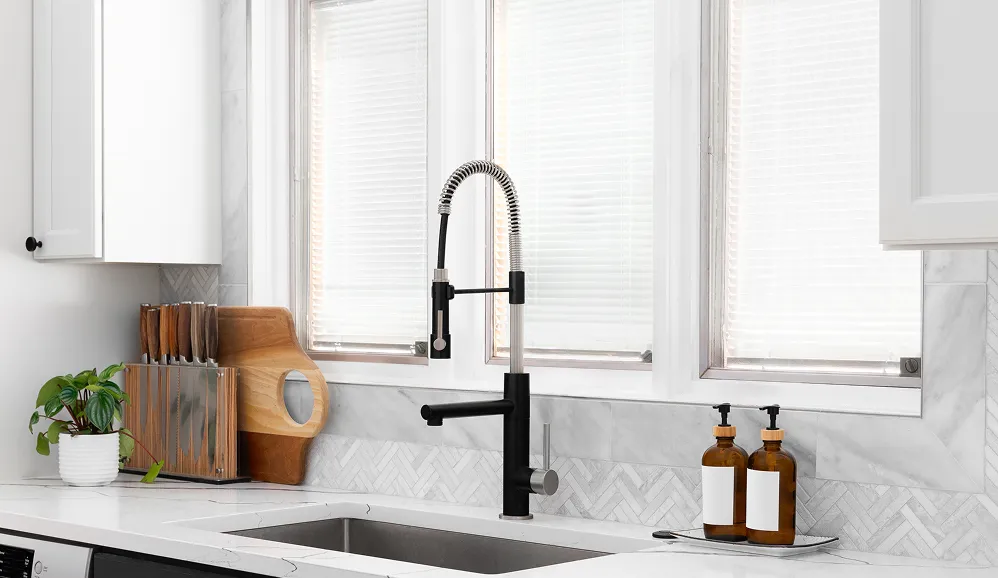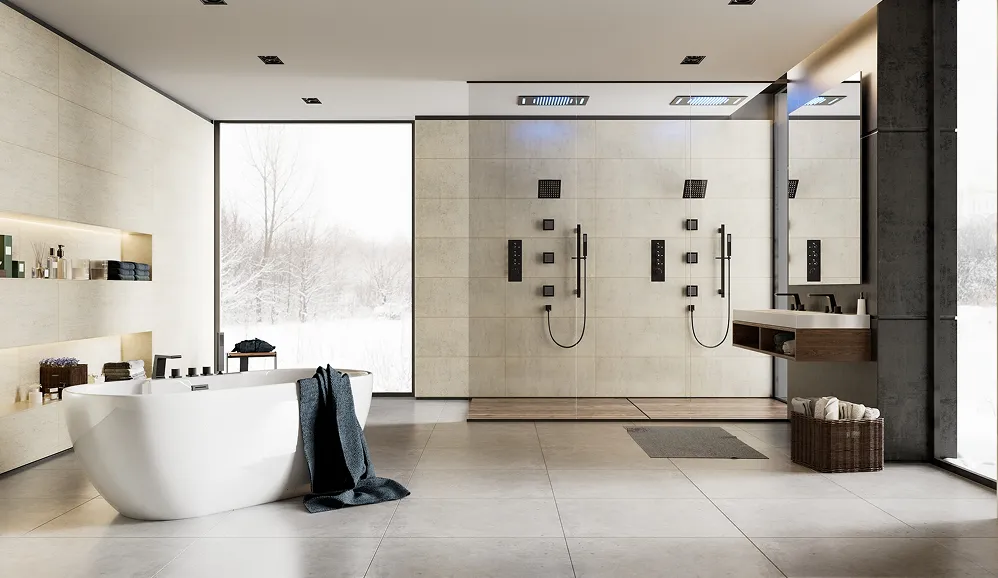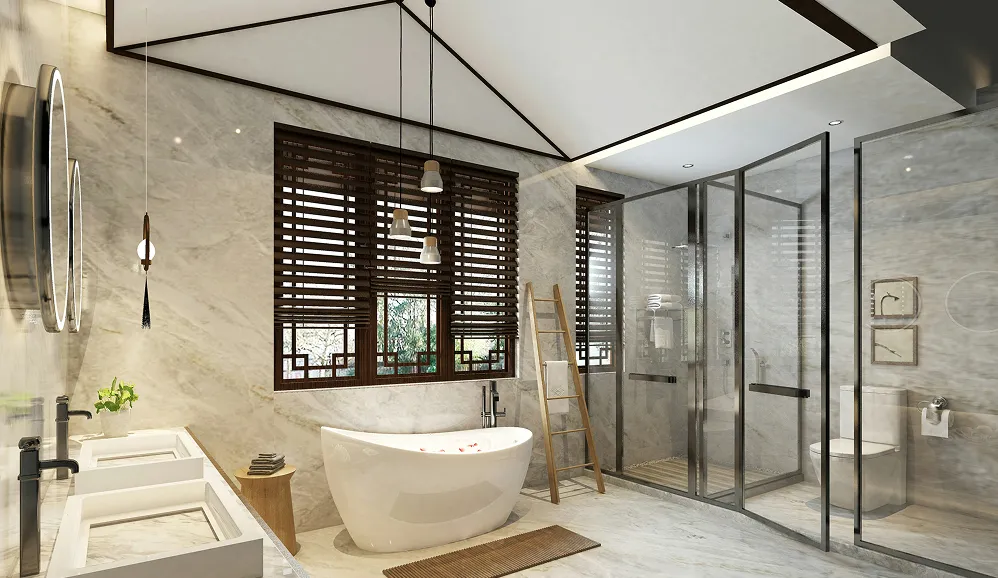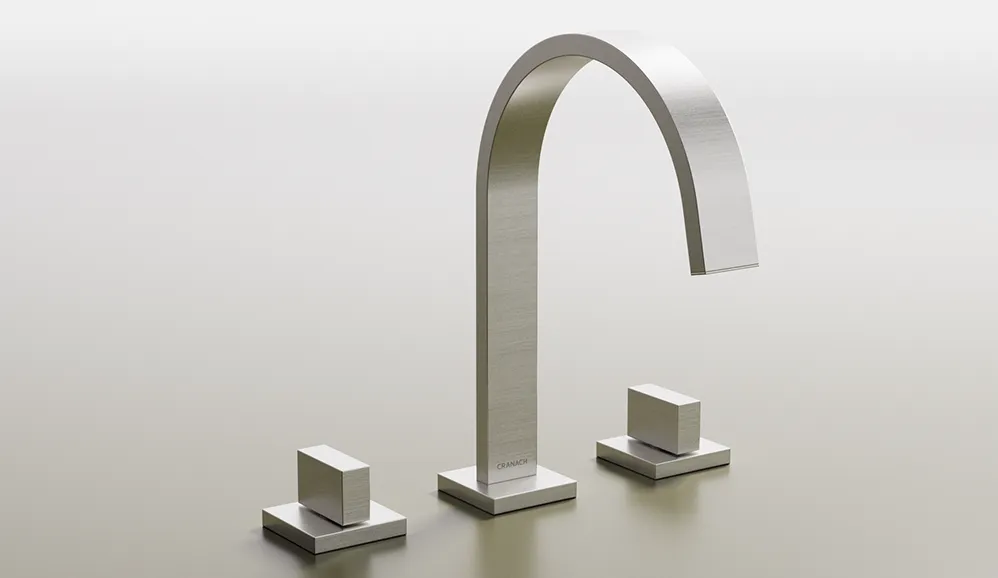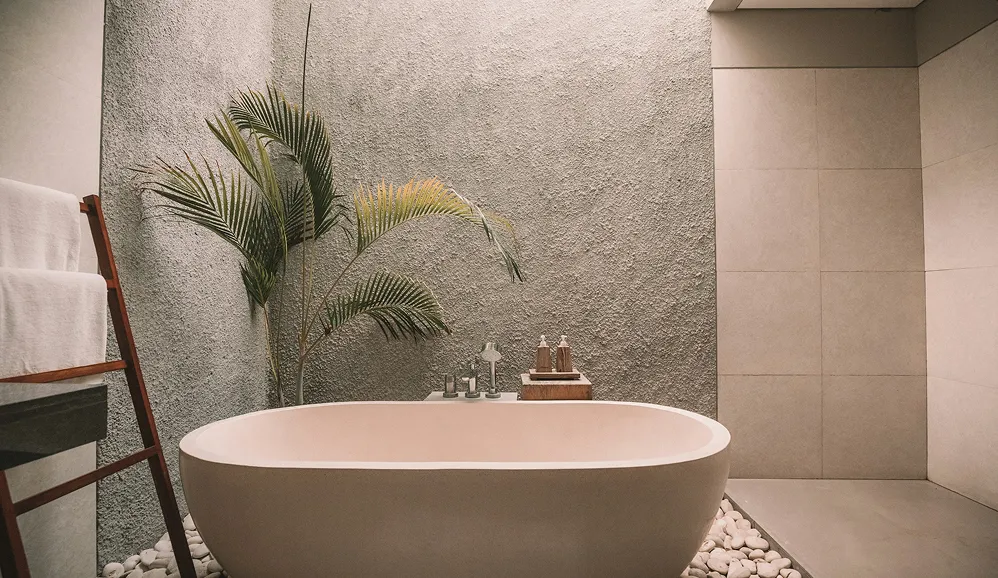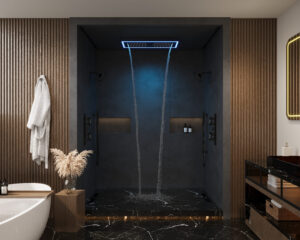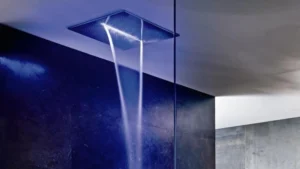So, you’re asking the big question: how much is it to remodel a shower? The honest answer is that it really depends on what you have in mind. A simple, straightforward refresh could run you as little as $1,500, but a full-blown luxury overhaul can easily climb past $12,000. The final number on the invoice comes down to the scope of your vision.
Your Quick Guide to Shower Remodel Costs
Getting a shower remodel on the calendar is exciting, but let’s be real—the budget is usually the biggest hurdle to clear. I like to compare it to buying a car. You have your basic, reliable models that get you from A to B. Then there are the mid-range options with a few creature comforts. And of course, you have the high-end luxury vehicles with every bell and whistle imaginable.
Each tier does the same job, but the experience and the price tag are worlds apart. The exact same logic applies to your shower.
Getting a handle on the typical cost spectrum right from the start is the best way to line up your dreams with what’s realistic for your wallet. For a much deeper dive into all the financial details, feel free to check out our in-depth guide on shower renovation expenses.
Estimated Shower Remodel Costs at a Glance
To help you get a clearer picture of where your project might land, let’s break down the costs you can expect at different levels. A basic refresh is all about cosmetic touch-ups, while a high-end remodel is a complete transformation with top-tier materials and features. The cost to remodel a shower can vary quite a bit based on how big you go and the quality of materials you choose.
A simple refresh to breathe new life into your space usually lands somewhere between $1,500 and $4,000. If you’re planning a more involved mid-range project, like converting a tub into a walk-in shower, you’re likely looking at a budget of $5,000 to $10,000. For a true luxury, spa-like experience using premium materials and custom features, costs can soar past $12,000 and sometimes reach $25,000 or more.
This table gives you a snapshot of what you can generally expect for your money at each budget level. It should help you figure out which category best fits your goals and what you’re planning to spend.
| Remodel Tier | Estimated Cost Range | Common Features Included |
|---|---|---|
| Basic Refresh | $1,500 – $4,000 | New fixtures (showerhead, controls), reglazing existing tile, a new prefabricated door or curtain, and re-caulking. |
| Mid-Range Remodel | $5,000 – $10,000 | New prefabricated shower stall or tub-shower combo, quality ceramic or porcelain tile, semi-frameless glass door, and minor plumbing adjustments. |
| High-End Custom | $12,000+ | Custom-built walk-in shower, natural stone or high-end tile, frameless glass enclosure, built-in benches or niches, multiple showerheads or body jets, and significant plumbing changes. |
Ultimately, knowing these ranges helps you walk into your project with confidence, ensuring you can create a space you love without any shocking financial surprises along the way.
Decoding the Main Cost Drivers of Your Project
Ever wondered why one shower remodel might cost a manageable $3,000, while another easily blows past $15,000? The secret is in a handful of key decisions that steer the budget for your entire project. If you can get a handle on these factors, you’ll be able to build a realistic budget and sidestep those nasty, unexpected costs later on.
Here’s a simple way to think about it. Picking out a prefabricated shower unit is a bit like buying a great suit off the rack. It’s efficient, looks sharp, and won’t break the bank. Commissioning a custom tile shower, on the other hand, is like getting that suit tailored just for you. It’s a perfect fit for your space and style, but it definitely comes with a higher price tag.
Both get the job done, but the materials, the labor involved, and the sheer complexity are worlds apart.
This infographic breaks down how these key factors stack up to influence your final cost.
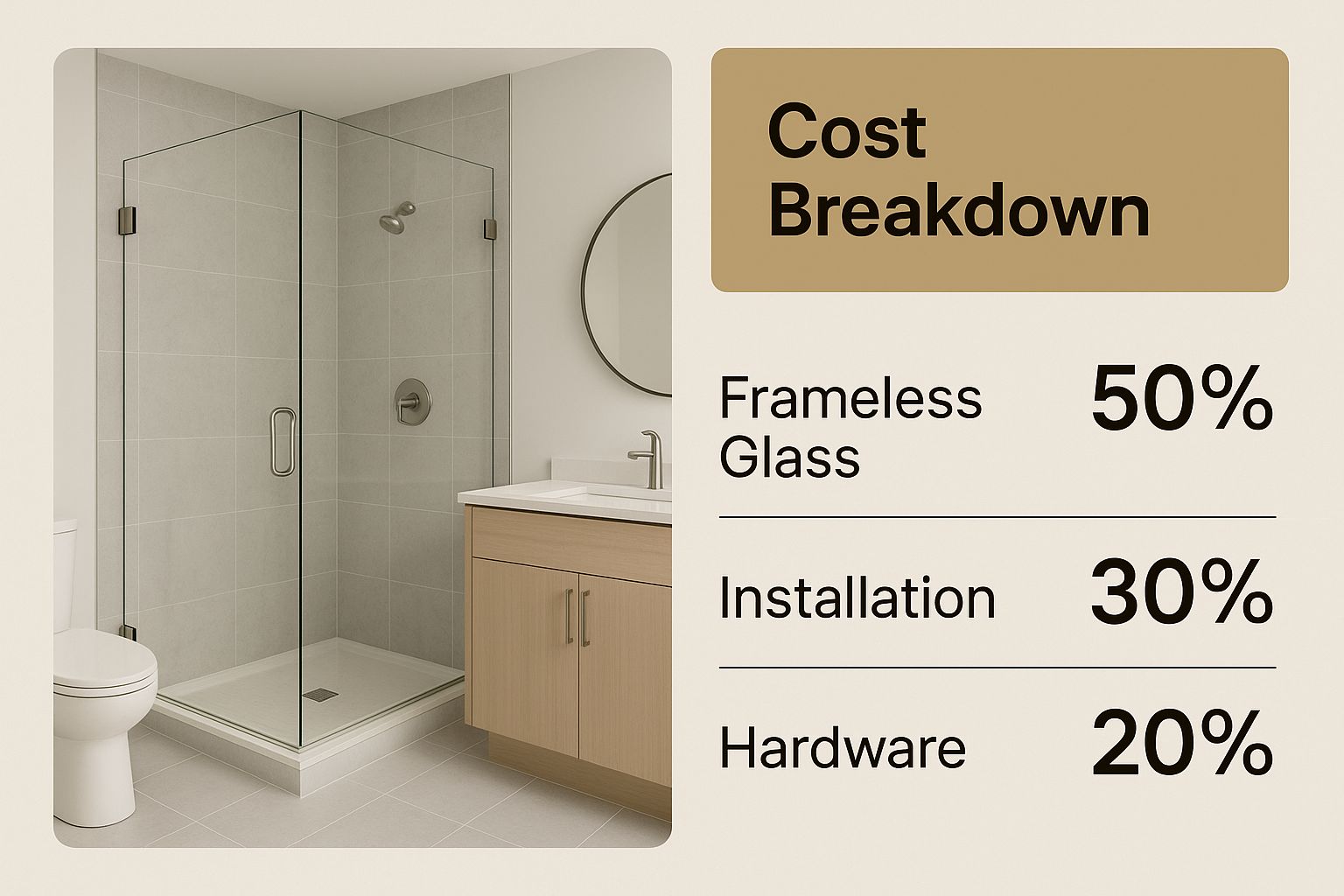
As you can see, the type of shower you choose and the materials you use are the real foundation of your budget. Everything else just adds to that initial tally.
Shower Type and Material Choices
The single biggest factor that answers the question of how much is it to remodel a shower is the kind of shower you install and what it’s made of. A basic tub-and-shower combo using a standard prefabricated kit will always be your most budget-friendly option.
But if you’re dreaming of a large, custom-built walk-in shower with high-end finishes like natural stone or intricate mosaic tile, the price will climb dramatically. The numbers back this up: a basic combo remodel can start around $3,000, whereas those luxurious walk-in showers can easily top $10,000.
The lesson here is simple but crucial: Your biggest budget decisions happen before a single tile is removed. Choosing between a standard fiberglass unit and a custom tile enclosure is the most significant fork in the road for your finances.
Plumbing Modifications and Fixture Complexity
Plumbing is another major player in your total cost. You’ll save a ton on labor if you can keep the shower in its current spot without moving the drain or supply lines.
But the moment you decide to move plumbing to a different wall or switch from a standard tub drain to a linear one for that sleek walk-in look, you’ll need a licensed plumber, and the costs will jump up considerably.
Your choice of fixtures matters, too. A simple, functional showerhead and valve are easy on the wallet. But a sophisticated shower system with multiple body jets, a rainfall head, and thermostatic controls is a much bigger investment.
A premium, all-in-one shower system can become a stunning focal point, blending high performance with elegant design. While it adds to the upfront cost, it completely transforms the daily experience. You can browse the latest CRANACH Shower Systems designs to see just how much they can elevate a space.
Choosing Your Perfect Shower System
When you start thinking about how much is it to remodel a shower, your mind probably jumps straight to the tile and the glass doors. But honestly, the heart of your daily shower, the part that actually makes or breaks the experience, isn’t the walls—it’s the hardware delivering the water. The shower system you pick is what defines the function, feel, and outright luxury of your new space.
Think of it like this: the shower enclosure is the beautiful, quiet library, but the shower system is the entire collection of books inside. One provides the structure and looks great, but the other delivers the actual experience. A high-quality, integrated system can elevate an ordinary shower into a personal spa, which is why so many homeowners are now choosing cohesive units from brands like CRANACH. They bundle all the controls and fixtures into one stunning, unified design.
Finding the Right Fixtures for Your Budget
As you start looking at different shower systems, you’ll come across a few key components that directly influence both the cost and your comfort level. Getting a handle on these options is the secret to balancing what you want with what you can afford.
- Shower Heads: Your choices here are vast, from a simple, single wall-mounted head to a full-blown multi-function setup. Rainfall heads give you that gentle, all-encompassing soak, while handheld wands are incredibly practical for rinsing hard-to-reach spots and making cleaning a breeze. For a true spa-like feel, you can even add body jets for an invigorating, full-body spray.
- Control Valves: This is the unsung hero working behind the wall. A pressure-balanced valve is the standard, affordable choice that keeps you from getting scalded if someone flushes a toilet. A thermostatic valve is a more premium experience, holding the water at a precise temperature you set, no matter what else is happening with the water in your house.
It makes sense that a fully loaded shower system with a rainfall head, a handheld wand, and a fancy thermostatic valve will cost more than a basic setup. But this is one of those areas where the investment pays you back every single day in pure enjoyment.
A system like the one pictured doesn’t just perform better; it also creates a high-end, unified look that you just can’t get from mixing and matching standalone components. It becomes a real centerpiece.
Integrating Your Shower System into the Overall Cost
The price tag on the shower system itself is just one piece of the puzzle. You also have to account for installation. Swapping out a simple, old fixture is pretty straightforward for a plumber. But installing a new system with multiple body jets or upgrading to a thermostatic valve requires much more intensive plumbing work, which will add to your labor costs.
This is especially true when you’re building something custom, like a walk-in shower, where the plumbing decisions are absolutely critical from the start. To get a better sense of how all these choices add up, you might want to read our detailed guide on how much a walk-in shower costs.
Ultimately, choosing a premium shower system from a trusted brand like CRANACH is more than just a purchase. It’s an investment in your home’s value and, more importantly, in your own daily well-being.
How Your Location Impacts Remodeling Costs
When you’re trying to nail down how much it is to remodel a shower, one of the biggest factors has nothing to do with fancy tile or a new showerhead—it’s your zip code. Seriously. The exact same project can have a shockingly different price tag depending on where you call home.
Think of it like buying a cup of coffee. You know that latte is going to cost more in a bustling downtown city than it will in a small, quiet town. The very same idea applies to home renovations, all thanks to regional differences in what contractors charge, how much it costs to get materials to your door, and even local permit fees.
Regional Labor and Material Costs
The single biggest reason for these price swings is the cost of labor. Skilled professionals—the plumbers, tilers, and contractors who bring your vision to life—set their rates based on the local cost of living. It makes sense, right? In big metro areas with high housing costs and wages, you’re naturally going to pay a premium for their time and expertise.
Materials can also fluctuate. While the base price of a shower system, like one from CRANACH, might be the same everywhere, getting it shipped to a remote rural area or a congested city can tack on extra costs. On top of that, simple supply and demand for things like tile and glass can create price differences from one state to the next.
This chart from the U.S. Census Bureau gives you a glimpse into the remodeling market, which is shaped by all these local economic forces.
The data really drives home how market conditions, which can vary wildly from one place to another, impact what you’ll end up paying.
Understanding the Numbers in Your Area
The stats show just how much location truly matters. A full bathroom remodel can run anywhere from $6,600 to $18,000, with your address being a primary reason for where you fall in that range. For instance, homeowners in Northern California often see their project costs jump 15% to 25% higher than the national average simply because of inflated labor and material prices. If you want to dive deeper into these differences, you can explore renovation cost data to get a better feel for your region.
Key Takeaway: When you’re budgeting for your shower remodel, you have to research local costs. National averages are a good starting point, but they’re just that—an average. The only way to get a real financial picture is to get quotes from contractors right there in your area.
By getting a handle on these geographic differences from the get-go, you can set a much more realistic budget. That way, you’ll avoid the sticker shock when the bids for your dream shower finally start rolling in.
Smart Strategies to Save on Your Shower Remodel
A stunning new shower doesn’t have to come with an eye-watering price tag. While the question of “how much is it to remodel a shower” can feel a bit daunting, there are plenty of practical ways to get that high-end look without blowing your budget. It all comes down to smart planning and making high-impact choices that deliver maximum style for your money.
One of the single most effective ways to save is to keep your existing plumbing layout exactly where it is. Think of your shower’s drain and water supply lines as its foundation. The moment you decide to move them, you’re kicking off a much more complex—and expensive—project that brings in a licensed plumber for some serious work. By designing your new shower around the current footprint, you sidestep a major expense right out of the gate.
High-Impact, Low-Cost Moves
Beyond the plumbing, your choices in materials and labor offer huge opportunities to save. You don’t always need the most expensive options to create a space that feels luxurious and inviting.
- Affordable Alternatives: Instead of splurging on natural stone, check out high-quality porcelain or ceramic tiles. Many masterfully mimic the look of marble or slate for a fraction of the cost.
- Prefabricated Units: A custom tile shower is a thing of beauty, but a modern prefabricated shower kit can be installed much faster and more affordably, saving a bundle on labor.
- Strategic DIY: If you’re a bit handy, you can slash your labor bill by tackling certain jobs yourself. Demolition, painting, and cleanup are all very manageable tasks for a motivated homeowner.
A word of caution, though: it’s always wise to leave the tricky stuff like plumbing and electrical work to the pros. You might feel confident removing an old showerhead, but installing a sophisticated new shower system from a brand like CRANACH is a job best left to an expert. This ensures it works perfectly and you get the experience you paid for. If you’re dealing with weak water flow, our guide on how to increase water pressure in your shower might offer some solutions.
Protect Your Budget From The Unexpected
No matter how meticulously you plan, remodels have a knack for unearthing surprises. This is why the most crucial part of smart budgeting is preparing for the unknown.
Always set aside a contingency fund of 10% to 20% of your total project cost. This isn’t “extra” money to play with; it’s a financial safety net for those nasty surprises like hidden water damage, mold, or outdated wiring that absolutely must be fixed.
Finally, never, ever settle for the first quote you get. Reputable sources like the National Association of the Remodeling Industry strongly advise getting at least three detailed bids from different contractors. This lets you compare not just costs but also the scope of work, helping you find a professional who offers the best value for your project and keeps your remodel on track and stress-free.
Is a Shower Remodel a Smart Financial Move?
After you’ve run the numbers, it’s completely natural to stand back and ask: is this really worth it? The key is to stop thinking of a shower remodel as just another expense and start seeing it as a long-term investment in your home. A modern, stylish bathroom isn’t just a nice-to-have; it’s a powerful asset that adds serious appeal and financial worth.
This isn’t just wishful thinking, either. It’s backed by solid industry data. A thoughtfully updated bathroom consistently delivers a strong return when it’s time to put your house on the market.
The Return on Investment
Beyond simply getting your money back at resale, a renewed shower offers an invaluable return on your daily life. Of course, you first need to figure out if it’s the right financial move for you. This means looking at how to fund it, including weighing the pros and cons of different options and figuring out whether home equity loans are a good idea for your specific situation.
Once you have a handle on the “how,” you can focus on the “why.” The Remodeling magazine’s 2023 Cost vs. Value Report is a great resource that breaks down exactly how different projects add to a home’s resale value.
As you can see, bathroom remodels consistently rank high for the percentage of cost you get back. This data should give you the confidence to move forward, knowing you’re making a reliable investment.
Your project is about more than just numbers on a spreadsheet. It’s an investment in your daily comfort, turning a routine task into a moment of personal luxury and boosting your home’s marketability for years to come.
Ultimately, a well-executed shower update is one of the smartest improvements a homeowner can make. It adds tangible value to both your property and your quality of life. An upgraded shower system from CRANACH, for example, is all about delivering that daily sense of well-being and turning your routine into a ritual.
Frequently Asked Questions About Shower Remodels
Jumping into a shower remodel is exciting, but it almost always comes with a lot of questions. We get it. To help you feel confident as you finalize your plans, we’ve put together some quick, straightforward answers to the questions we hear most often from homeowners.
What Is the Cheapest Way to Remodel a Shower?
If you’re on a tight budget, the best approach is to “refresh” what you already have instead of a full demolition. Think about reglazing your existing tile, swapping out old fixtures like the showerhead and controls for new ones, putting in a new shower door, and re-caulking everything.
If the whole enclosure absolutely has to go, a prefabricated acrylic or fiberglass shower kit will be your most cost-effective option. It saves a ton of money on both the materials and the labor compared to a custom tile job.
How Long Does a Typical Shower Remodel Take?
Most standard shower remodels take about 3 to 7 days from start to finish. That’s assuming the contractor doesn’t uncover any major surprises, like hidden water damage, once the walls are open.
This timeline generally covers everything: demolition, any basic plumbing tweaks, installing the new shower pan and walls, tiling and grouting, and finally, putting in all the new fixtures. Of course, more complex projects—like intricate custom tile patterns, moving plumbing lines, or building a bench—can easily push that timeline to two weeks or even more.
Should I Choose a Prefabricated or Custom Tile Shower?
This really boils down to three things: your budget, your timeline, and the look you’re going for.
Prefabricated units are fantastic for being affordable and quick to install, but you won’t get much say in the design. On the flip side, custom tile showers give you complete creative freedom for that high-end, spa-like feel. They can be built to fit any unique space, but they come with a higher price tag and take longer to build. A custom approach also makes it much easier to add features you’ll love, like built-in niches for your shampoo bottles or a comfortable bench.
It’s also smart to think about the long-term savings from your new shower’s water use. You can dive deeper into that by reading our guide on how many gallons of water a shower uses.
Ready to elevate your daily routine? Explore the full range of luxurious and efficient shower system options at CRANACH and find the perfect centerpiece for your new bathroom. Visit our collection here: CRANACH Shower Systems.

